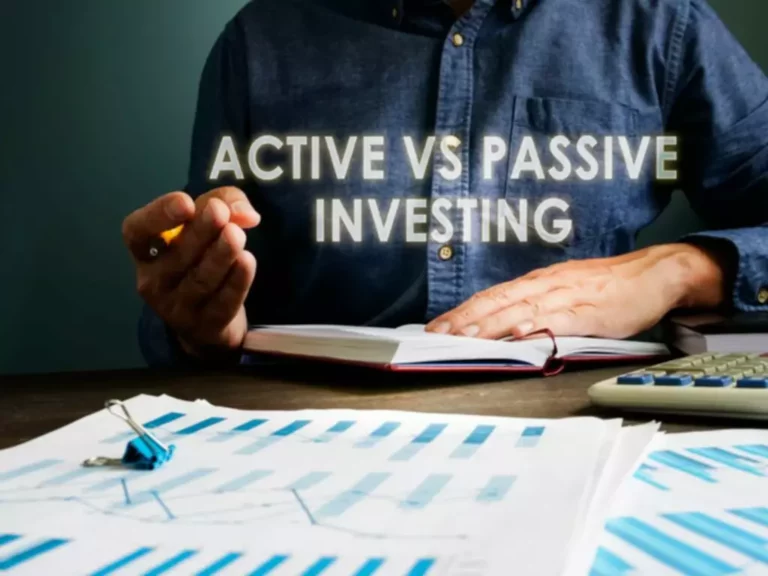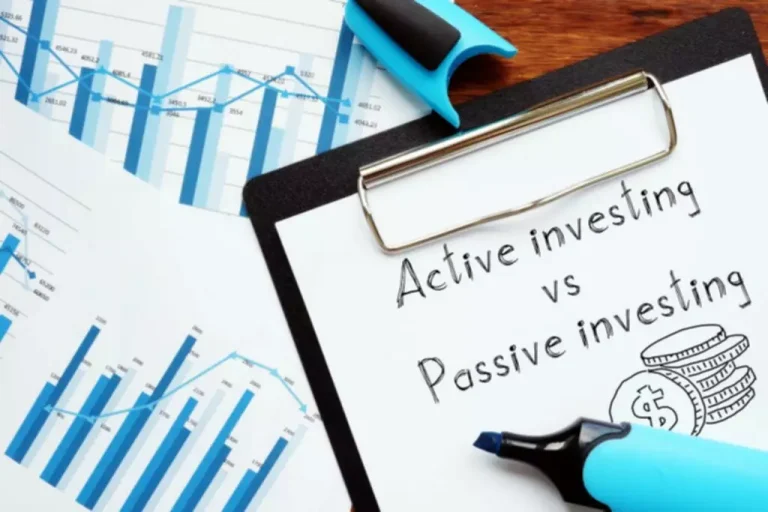Index-style (passive) investing has gained more popularity in the past few years. People prefer duplicating market returns instead of trying to beat them, as in the example of active trading.
The statistics show that active investment managers fail to choose enough valuable assets to invest in to justify the high fees. However, active investing can still bring short-term profits.
Each investment type has its advantages and disadvantages. Keep reading our article to learn more about active vs. passive investing and which one to choose.
What is active investing?
As the name implies, active investing revolves around frequent trading. Typically, the aim is to beat average index returns. Active investment requires skills and a high level of market analysis to achieve success. Moreover, traders need experience to determine the best time to sell or buy assets.
Traders can do active investing themselves, or they may opt for delegating this task to professionals. The second option requires establishing actively managed mutual funds or active exchange-traded funds (ETFs). These funds provide traders with ready-made portfolios with hundreds of investments.
Regardless of who manages these funds, the manager has to assess a wide range of data about every asset in the portfolio. The manager must check the quantitative and qualitative data about securities, analyze broader markets, and forecast potential economic trends.
Then the manager uses gathered data to buy or sell assets to get more money. Typically, managers capitalize on short-term price changes. Active investment requires constant attention and management from investors. Otherwise, they may experience losses. It’s why only experienced, attentive, active investors achieve success.
Typically, experts don’t recommend active investment for most investors, let alone beginners. It’s also never a good idea to use long-term savings, such as retirement savings, to make an active investment.


Turnkey Brokerage Solution For Your Business
Get the most profitable fully licensed fx/crypto brokerage software or ready-to-operate business in 48 hours. Best-in-class web & mobile trading platforms, sales-driven CRM, full integration with MT4/5, and 150+ payment providers.
What is passive investing?
When you engage in passive investing, you buy specific assets and hold them for a long period. In simple words, it’s a hands-off approach. Instead of actively analyzing the market to determine when to sell an asset, a trader chooses security and keeps it through ups and downs. Typically, investors choose such an approach when they have retirement or long-term savings in mind.
Active investors typically focus on buying and selling individual securities, while passive traders purchase shares of index funds or ETFs, which aim to mirror major market indexes’ performance. Investors can choose shares of specific funds in a brokerage account or opt for using robo advisors that take care of purchasing funds.
Passive investing doesn’t require the investor’s constant attention. Yes, the investor should keep an eye on the market in case of drastic changes that may jeopardize the future income, but the process doesn’t require daily analysis.
Since passive investing doesn’t require regular buying and selling of assets, it also means that the user doesn’t have to pay transaction fees. That’s why financial advisors often recommend passive investments regarding long-term investment goals, especially retirement.
So, when it comes to active vs. passive investing, traders have different goals. The active type requires benefiting from short-term price fluctuations, while the passive type means you have to ignore short-term setbacks to achieve long-term goals. Now let’s check out the active vs. passive investing advantages and disadvantages.
Active vs. passive investing: main differences
From the description of each investment type, one can easily tell they are different. Let’s check out active/passive investing pros and cons to better understand some key differences between these types.
Active investing advantages
Despite the clear risks of active investing, the method has a few benefits. These benefits include:
- Hedging or setting limits. Active traders may hedge their funds using modern techniques like short sales or put options. That way, funds managers can exit various stocks or markets if the risks are too big. In comparison, passive investors are stuck with the securities that mirror stock market indexes, regardless of how well or badly they perform.
- More flexibility. Unlike passive investment managers, active investors can follow any indexes they prefer. If an active trader has found a “gem of a stock,” they can easily buy this asset.
- Tax management. If an investment isn’t gaining income, you can sell it to avoid paying taxes on something causing losses. Even though such a strategy may require investors to pay capital gains tax, financial advisors can help manage taxes and avoid overpaying.
So, active investment managers get more freedom when deciding what assets to buy. Moreover, they can manage their taxes by selling unprofitable assets before the tax season.

Active investing disadvantages
The obvious disadvantage is that traders must dedicate a ton of time daily to analyze the market. Active investing also comes with other disadvantages:
- Higher fees. Traders actively buy and sell assets to benefit from price fluctuations. However, even the value of the best deals is decreased because of transaction fees. Trades trigger transactions that may “eat” the income from these deals. Moreover, if a user hires an analyst team to research equity pits, they must pay them salaries. All these expenses accumulate, and if you don’t pay attention, they may exceed the profit.
- Higher risks. If active investors make the right choice, they experience great profits. However, if one of the investments fails, it can affect the entire portfolio and cause huge losses. The losses are even worse when traders borrow money or margin trade.
- Trend “noises.” Many active investors fall for trends and invest accordingly. Sometimes, these trends lead to profit, but in most cases, they lead to failures. It’s extremely difficult to choose how to invest when traders are exposed to so many trends.
Active investing may lead to catastrophic losses when investors make bad choices. It’s critical to take care of analytics before investing rather than blindly following trends. Thus, even experienced traders should stay alert and choose wisely.
Passive investing advantages
Your best bet when it comes to investing is the passive type, as it doesn’t require much attention. Passive investing has a few other advantages:
- Lower expenses. Passive investing has reduced trading volumes, leading to lower costs for passive investors. Moreover, passive funds management charges lower expense ratios than most active funds. Passive investing doesn’t require research.
- Transparency. Typically, the index a trader’s fund tracks is part of its name. Moreover, it won’t hold investments outside of its namesake index. In comparison, actively managed funds rarely provide as much transparency. The fund’s manager can withhold some techniques from the general public to preserve an edge over competitors.
- Lower risks. Passive traders mainly focus on funds, so they invest in stocks and bonds. As a result, they diversify their portfolios and manage to avoid losses. Even if the investor has a few bad investments that decrease in value, they won’t affect the entire portfolio, so the losses are less significant.
- Better average returns on investments. Typically, passive funds of any type have higher returns. For instance, around 90% of index fund tracking companies manage to outperform active investment companies during a 20-year period. Moreover, you can show better progress within three years compared to the progress of active investors.
Compared to active investors, index-focused traders get better long-term results. Moreover, they don’t have as many expenses as managers of active funds.
Passive investing disadvantages
Even though it may seem like index-focused investing is the best pick, it still has several disadvantages. Before you start working on your portfolio, check out the disadvantages of passive investing:
- Limitations. Passive fund managers follow only a small range of specific indexes or predetermined sets of investments. Moreover, they are stuck with the index they follow. For example, if medical stocks are experiencing a downtrend, investors can’t get rid of these stocks since they don’t own underlying stocks directly. Instead, they follow the index that holds these stocks. If the index still holds these stocks, investors are stuck with them no matter what is happening in the market.
- Lack of an exit strategy in severe bear markets. The passive funds’ manager builds their portfolio with long-term investments in mind. Investors rarely have any options to exit a failing strategy during severe market downturns. Even though the historical data shows that most markets recover, there is no guarantee of when it will happen.
- Smaller returns. A passive fund barely ever beats the market, even though exceptions happen. Active funds managers get higher rewards, although they deal with high risks.
- Less exciting. Some traders want great progress within a short period. They can achieve this progress with active investing when just one stock from the portfolio skyrockets in price. Passive funds never give immediate results.
There is a stereotype that you can’t experience huge losses with passive investing. In reality, the market may experience downturns. Even though it will most likely recover, you still lose money.
Experts recommend regularly revising asset allocation over longer periods to avoid losses because of the market’s turmoil. You barely have any time to recover from market dips when approaching the end of an investing timeline. Instead, ensure to revise your portfolio and make it more conservative closer to the end of your investment goal.
Which to choose: active or passive investing?
Most investors are better off with passive funds management because of lower fees and overall costs to maintain a portfolio. Moreover, passive investing doesn’t require your constant attention and regular research.
If you are a beginner, it’s probably better to choose passive investing since you don’t have to decide what assets to buy or sell. The statistics mentioned in the article also prove that index-focused investing guarantees better long-term returns.
However, if you feel confident trading during a bear market, you can consider active investing. Active fund managers aren’t required to stick with specific stock sets in a particular index.
Thus, active investors may encounter outperformance assets in various market parts and gain significant rewards. In comparison, index-tracking investors would have to stick with a large selection of stocks in every sector across the market.
Typically, investors with larger investment portfolios ($1 million and higher) prefer active funds management. They usually delegate the task to professionals who manage their funds. Thanks to active management, they can protect their wealth if the market is experiencing turmoil.






